“This is the weapon of a Jedi Knight. Not as random or as clumsy as a blaster, but an elegant weapon for a more civilized age.” Said Obi-Wan Kenobi
In the Star Wars Universe, described in its literature and movies that there exist seven main forms of lightsaber combats. Each of them has its own explanation, philosophy, strengths and weaknesses. These seven form are described below:

Form I (Known as Shii-Cho)
To put it simply, this is the most basic and traditional form of combat. It is the oldest form of fighting to exist. If you see it in terms of technique, it is almost no different from regular sword-fighting. And it perfectly makes sense since Shi-Cho was made during the time when the swords were transitioning to lightsabers. Generally, the stance, attacks, parries, maneuvers and such were held from bladed sword fighting to lightsaber combat. This is why this style is often referred to as straightforward.
In the combat field, this method of combat is remarkable for several opponents as the swords are wide-sweeping. However, sadly it is not for the one-to-one fights as it is easy for the opponents to unleash the weakness of this form.
Kit Fisto and Obi-Wan Kenobi are the two most popular practitioners of the Shii-Cho combat form.
Form II (Known as Makashi)
As mentioned above, there are certain weaknesses in Form I which were kept in mind while designing the Form II which is also known as Makashi. And, Form II techniques are made to be more elegant. For Makashi, the practitioners engage in superb swordplay which makes them formidable duelists.
There is an importance given on speed and precision and the moves are very much similar to real-life fencing with fighters retreating and advancing while staying in a single line.
In place of depending on slashes and the blocks, Makashi practitioners turn their defense and offense with light buts and accurately timed parries. This form is ideal for the single or one-to-one fights but not ideal for defending against the blasters or large groups. Count Dooku was one the highlighted Form II practitioners and he demonstrated the style’s strengths with his smooth and swift swordplay.
Form III (Known as Soresu)
The third form of the seven lightsaber combat is referred to as Soresu. It is a form which supports ultimate defense. It was created to cater the increasing blaster usage. Just like Form II, the third form utilizes the tight bladework however breaks the rigid back and forth footwork to welcome dodging. Soresu is mainly focused on the moving lightsaber and converting energy to win over any opponent to wait for them to make any fatal mistake and backfire with the defense move.
Jedi training in Soresu can fight against various or an alone opponent as long as the opponent stays calm. However, the third form lacks offensive maneuvers as the goal is to make sure that he outlasts the opponent rather than overwhelm.
Obi-Wan Kenobi was known for his excellent skills and performance in Form III and his battle with Anakin Skywalker is a highlight and displays the perks of using Soresu to bait opponents into making mistakes.
Form IV (Known as Ataru)
It is also referred to as the “The Way of the Hawk-Bat” or “The Aggression Form”. As the name suggests it is highly focused on the attacking. It is understood and makes sense that this form was made because the third form was completely based on the defense moves. Since, this is a rapid and intense style, this form is also considered as an ideal form for one-on- one fights. It is intense and extremely acrobatic, specifically how the force is partnered with somersaults and stunts in the air.
It is generally a popular fighting style as it is the most visually pleasing and exciting form of combat. Watching Yoda bounce around and utilize the force with quick blade work can also be seen as an artistic feat. However, when this form is used in battles, it is proved to be extremely detrimental since it will exhaust the user to the maximum. Likewise, it is not good for defense if encountered with blasters which is why most of the Jedi have varying fighting styles.
Apart from Yoda, the proficient practitioners of this style of combat include Qui-Gon Jinn and Ahsoka Tano.
Form V (Known as Shien or Djem So)
The fifth form has two key disciplines which are Djem and Shien. Both of these are based on the counter attacking. Shein revolves around returning blaster shots while Djem So revolves around returning the lightsaber attacks. The philosophy of the fifth form is to defend and attack which is evident that it is a combination of From III and Form IV.
This style of fighting calls for the most physical strength and some questions using the form V since it also focuses on controlling the opponents. Djem So is all about overwhelming enemies with detrimental attacks, strikes; therefore, it is no surprise that Anakin Skywalker, who later switched to the Dark Side, used this form to crush his enemies.
Form VI (known as Niman)
The sixth form is known as Niman and is a combination of all the previous five forms discussed. They are combined into a traditional style which doesn’t have outstanding strengths or weaknesses. Jedi are the group which focuses more on diplomacy or study-based Form VI as the bladework is much easier and simple.
Moreover, Niman includes the dual blades which acts as the gateway to Jar’Kai. To overcome the gap because of the simplicity, the serious practitioners were motivated to be creative with their approaches and to incorporate telekinesis along with Force pulls and pushes.
Jar’Kai:
Jar’Kai is not formally categorized as any form but can be classified under the sixth form as it simply denotes the practice of utilizing two lightsabers. This is kind of a tricky technique as it needs good coordination to handle two lightsabers however, the tradeoff is worth it as Jar’Kai masters are great at maintaining an aggressive barrage.
But the practitioners are not allowed to attack or black using both hands and fighters are extremely dependent on two lightsabers. As a result, they are considerably undermined if they lose any lightsaber. Ahsoka Tano was a popular Jar’Kai Jedi who utilized a shoto to offset the weight of the two lightsabers.
Form (Known as Juyo or Vaapad)
The last and the seventh form is referred to as the Juyo or Vaapad. It is the most intense and deadliest lightsaber form, as such, calls for the Dark Side. The Sith group favors Juyo Form, which ensures their war skills and make them such powerful warriors. Juyo is also considered as an emotional form which calls for the users to channel their anger or rage or malice into destroying their enemies.
This is the key differentiating feature of this form as all others have controlled motions. Juyo also calls back the characteristics of the Form I by giving importance to the chaotic and unpredictable movements which eschew the Jedi Order’s graceful control.
Mace Windu formed Vaapad to allow his inner darkness to be channeled into fighting for the light. The Vaapad practitioners continuously use the Force to move at the speed of light and they direct their desires to win into new strength.
The Lightsaber Combats
The lightsaber combats have a great history and the deep philosophy behind every different style. All of these styles are well-explained since these forms have unique characteristics, weaknesses and strengths. Each form examines Jedi or Sith key points from their personality and how they are incorporated in each form.
The lightsabers are unique and one of its kind weapons ever created in a fictional world. As shown in movies and literature of Star Wars, they are an all cutting weapon. They are capable of slicing away whatever comes in contact with it.
The most unique feature of the weapon is that only the people who are strong enough with The Force are capable of using it efficiently. It is a weapon of martial prowess; you are capable enough to wield a weapon only a fraction of the Galaxy could use.
And this is what we refer to as a lightsaber, a weapon. It is a specific item made for the purpose of killing people. It is designed to resemble a sword although it has much variation to it which include double bladed lightsaber, curved, shoto, and list goes etc. Just how there are different opinions and reviews related to every weapon, so are there for these.
There are multiple variations and styles of usage to use them effectively. This is combined by the fact that the saber is mostly characterized by the hilt, which is customized by the person using it. Therefore, it is given that there stands several philosophies on how to use the lightsabers in the best way.
There is one last thing that all fans must keep in mind is that all of these forms and lightsabers itself are not real but simply a very realistic fictional weapon. Fascinating, no? Therefore, when you read up the Star War literature or watch the lightsabers in the movies or anime there might be slight clashes. The most visible difference will come when you go to buy one. Yes, there are extremely surreal lightsabers available in the market today but still they differ slightly from what you have read or seen. However, the advanced programming has allowed people to edit the open source document and make variations from their imagination, which is obviously vast and deep as sea. So, pick your lightsaber, let it be neopixel light saber or baselit rgb, just customize it, and enjoy!
FAQs
Q: Who mastered all 7 forms of lightsaber combat?
A: Darth Sidious stood among the Sith’s most formidable and adept swordmasters, demonstrating mastery of all seven lightsaber forms, including their various stances and techniques. Moreover, he showcased remarkable ambidexterity, allowing him to wield each form with equal effectiveness.
Q: What is the most effective form of lightsaber combat?
A: Among the seven forms of lightsaber combat, Soresu, Shien, and Vaapad are often regarded as the most effective. Each of these forms offers unique strategic advantages and comes with its own set of strengths and weaknesses.
Q: What is Form 7 lightsaber dueling?
A: Form VII, referred to as Juyo and Vaapad, is the seventh form of lightsaber combat, often known as The Ferocity Form. It is recognized for its highly aggressive and unpredictable nature, emphasizing swift and unforeseeable strikes. Additionally, it encourages practitioners to channel their emotions into their fighting style. This form was renowned for being the most aggressive and unpredictable of all lightsaber combat styles.
Q: What was the forbidden lightsaber form?
A:During the Sith Wars, the Sith employed the Forbidden Forms, which were specific lightsaber combat styles. According to Jedi Cervil the Uncanny’s accounts, lightwhips—lightsaber variants with flexible blades—were utilized by Jedi as a means to counter Sith Lords who employed these forms.
Q: Why was Form 7 banned by the Jedi?
A: Form VII, Juyo, and its refined variant, Vaapad, were not officially banned by the Jedi Order. However, the Jedi Council was cautious about this form due to its focus on channeling and drawing upon the user’s inner darkness, as it could lead to the temptation of the dark side of the Force. In contrast to other forms, Juyo urged Jedi to embrace their emotions and utilize them to launch an unyielding assault. Consequently, the Jedi prohibited the practice of Form VII for an extended period.
Q: What is the forbidden lightsaber move?
A: The forbidden lightsaber technique referred to as “Tricada” has been employed since the early days of the retractable lightsaber’s creation. This maneuver involves intentionally activating and deactivating one’s lightsaber during combat, aiming to disrupt saber locks and deceive opponents.
Q: Is there an 8th lightsaber form?
A: Sokan emerged as a distinctive lightsaber combat form crafted by the ancient Jedi Knights during the era of the Great Sith War. It skillfully blended evasion and mobility tactics with the kinetic motions characteristic of Form V combat. Sokan practitioners executed rapid and agile strikes, deliberately targeting vital areas of their adversaries. This form also incorporated swift tumbles and fluid movements to enhance its effectiveness.
As for Form VIII, it represented an offensive approach that relied on the combined attributes of speed and strength to overpower opponents while providing opportunities for counter-attacks. The level of defense and precision employed in Form VIII varied based on the user’s individual capabilities and mastery of the form.
Q: Who knew all 7 lightsaber forms?
A: Among those who possessed extensive knowledge and mastery of all seven lightsaber forms, we find Jedi Battlemaster Cin Drallig and the revered Grand Master Yoda. Cin Drallig, renowned as a lightsaber combat instructor at the Jedi Temple, demonstrated expertise in all seven forms, including Juyo. Similarly, Grand Master Yoda earned a well-deserved reputation for mastering each form of lightsaber combat, a feat shared by another lightsaber instructor named Anoon Bondara.
Q: Which lightsaber combat form is best suited for defensive strategies?
A: When it comes to defensive strategies, Form III: Soresu (The Way of the Mynock) is considered the most effective. Soresu specializes in strong defensive techniques, deflecting blaster bolts with minimal effort. By prioritizing defense, practitioners of Soresu exhaust their opponents while waiting for the perfect moment to counterattack.
Q: Can a Jedi master all seven lightsaber combat forms?
A: Yes, a Jedi can master multiple lightsaber combat forms.During lightsaber training, Jedi practitioners receive instruction in recognizing and familiarizing themselves with all seven forms of combat. Jedi Masters, after years of training and experience, have been known to become proficient in various forms. However, it requires significant dedication, discipline, and a deep understanding of each form’s principles and techniques.
Q: What are the key differences between Form VII (Juyo/Vaapad) and the other forms?
A: Form VII (Juyo/Vaapad) differs from the other forms in the following key ways:
- Embracing the dark side: Unlike other forms, Juyo/Vaapad allows practitioners to tap into their inner darkness while maintaining control.
- Unpredictability: Juyo/Vaapad emphasizes rapid changes in attack patterns, angles, and footwork, aiming to confuse opponents and exploit their vulnerabilities.
- Close-quarters combat: It excels in close-quarters combat, employing aggressive and relentless strikes to overwhelm opponents.
- Mastery requirements: Juyo/Vaapad is considered one of the most challenging forms, demanding exceptional control, discipline, and understanding of one’s emotions due to its reliance on harnessing the dark side.
Q: How can I learn and practice lightsaber combat forms?
A:To learn lightsaber combat forms:
- Study: Familiarize yourself with form principles, techniques, and philosophies through books, manuals, and online resources.
- Find a mentor: Seek experienced practitioners or join lightsaber combat organizations for guidance and training with like-minded individuals.
- Physical training: Develop strength, agility, and coordination through regular exercises to improve endurance, flexibility, and reflexes.
- Practice lightsaber handling: Use a practice lightsaber or suitable substitute to practice strikes, blocks, and footwork for muscle memory development.
- Sparring and drills: Engage in controlled sparring sessions with similar-level partners and incorporate combat-simulating drills to improve reactions and technique.
- Continuous learning: Refine skills, seek feedback, and attend workshops, seminars, and events to learn from experienced practitioners and expand knowledge.
Q: What are the different lightsaber colors and their meanings?
A: Lightsabers in the Star Wars universe can come in various colors, each representing different meanings. The most common colors and their associated meanings are as follows:
Blue: Typically associated with Jedi Guardians, symbolizing justice and protection.
Green: Often used by Jedi Consulars, representing wisdom, diplomacy, and a strong connection to the Force.
Red: Usually wielded by Sith and Dark Side users, signifying power, aggression, and the corruption of the Force.
Purple: Rare and often associated with Jedi who can tap into both light and dark side energies, indicating a unique balance.
Yellow: Used by Jedi Sentinels, representing a blend of combat skills and scholarly pursuits.
White: Associated with Jedi who have purified red lightsabers or those who follow non-traditional paths, representing purity and a new beginning.
Other colors: There are also lightsabers with less common colors, such as orange, black, and silver, often indicating unique circumstances or personal choices of the wielder.
Q: What are the origins of lightsaber combat forms in Star Wars?
A: The origins of lightsaber combat forms can be traced back to ancient times in the Star Wars universe. These forms were developed by Jedi and Sith throughout the millennia, refining and adapting their techniques to better suit their philosophies, combat styles, and strengths. Each form emerged as a response to specific challenges and threats encountered by Force users, as well as advancements in lightsaber technology. Over time, these combat forms evolved, diversified, and were passed down through generations of Jedi and Sith, shaping the galaxy’s history.
Q: Are lightsaber combat forms exclusive to Jedi and Sith?
A: While lightsaber combat forms are commonly associated with Jedi and Sith, they are not exclusive to these groups. Various Force-sensitive individuals, such as Dark Jedi, Grey Jedi, and Force users from different orders or organizations, have been known to practice and develop their unique lightsaber combat styles.
These individuals may incorporate elements from established forms or create entirely new techniques based on their beliefs, experiences, and preferences. Lightsaber combat forms, therefore, can be seen as a diverse and adaptable discipline within the larger spectrum of Force users.
Q: How do lightsaber combat forms influence lightsaber design?
A: Lightsaber combat forms have a significant influence on lightsaber design. Each form’s specific techniques, stances, and principles necessitate certain characteristics in lightsabers to maximize their effectiveness. For example, a lightsaber designed for Form II: Makashi, which emphasizes precision strikes and dueling finesse, might have a thinner and more elegant hilt.
In contrast, a lightsaber suited for Form V: Djem So, emphasizing power and defense, could have a sturdier hilt with a larger blade emitter. The design choices may also include grip ergonomics, weight distribution, blade length, and other factors that align with the practitioner’s preferred combat form.
Q: How do lightsaber combat forms contribute to character development in Star Wars?
A: Lightsaber combat forms serve as a narrative tool in Star Wars, allowing character development through their chosen combat style. The form a character adopts can reflect their personality, beliefs, and training. For example, a Jedi who favors Form IV: Ataru, known for its acrobatics and agility, might be portrayed as youthful and energetic.
Conversely, a Sith specializing in Form V: Shien/Djem So, emphasizing power and aggression, could be depicted as ruthless and formidable. Lightsaber combat forms provide a visual representation of a character’s journey, showcasing their growth, discipline, and alignment with the light or dark side of the Force.
Q: Are there lightsaber combat masters or experts in the Star Wars universe?
A: Yes, the Star Wars universe features numerous lightsaber combat masters and experts renowned for their exceptional skill and knowledge. These individuals have dedicated their lives to honing their craft and have achieved a high level of mastery in specific forms or overall lightsaber combat.
Jedi Battlemaster Cin Drallig, renowned for his expertise in all seven forms, is regarded as one of the greatest lightsaber instructors in Jedi history. Other notable masters include Mace Windu, known for his mastery of Form VII: Vaapad, and Count Dooku, an expert in Form II: Makashi. These masters serve as inspirations and mentors to other Force users seeking to become skilled lightsaber duelists.

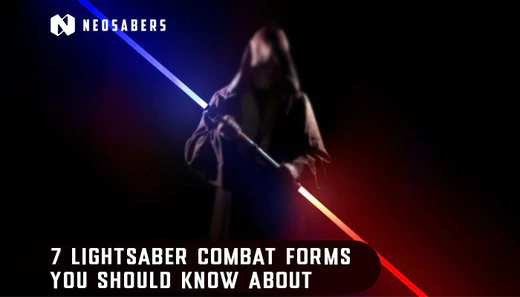

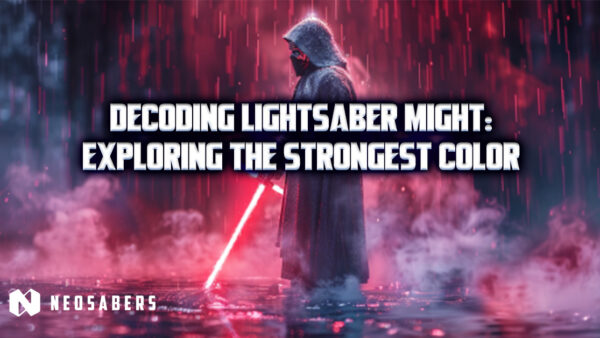
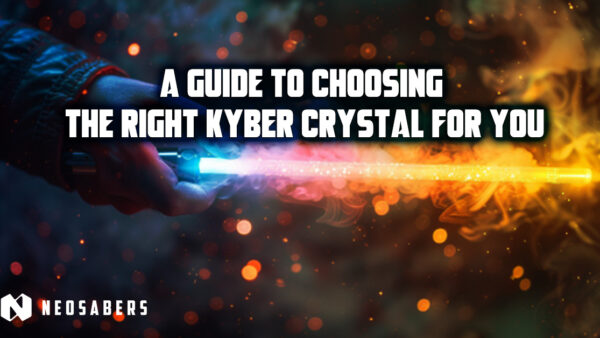
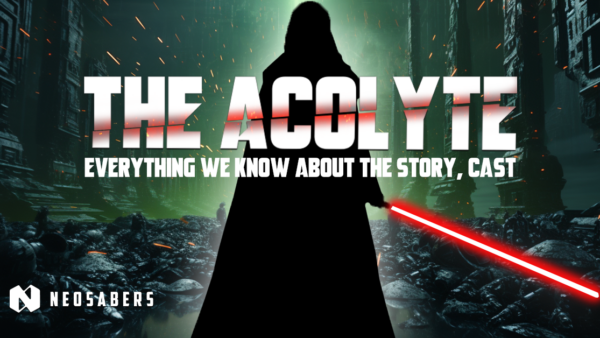
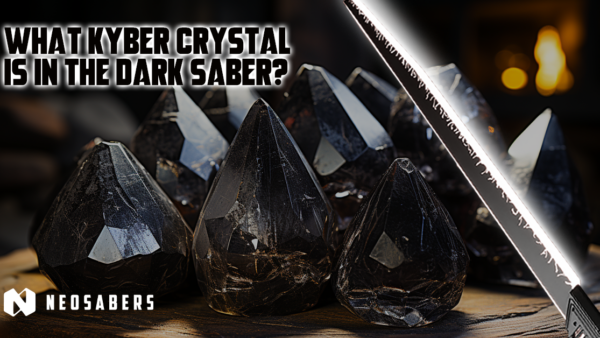
Leave a comment